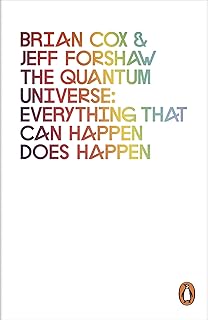Imagine a young Princeton University graduate student, Hugh Everett III, in 1954, having a wild idea while sipping sherry with friends. This idea would eventually lead to the concept of the multiverse. In quantum mechanics, particles exist in superpositions, presenting a challenge in reconciling the microscopic and macroscopic worlds. Everett proposed a multiverse where all quantum possibilities coexist in separate realms simultaneously.
Initially met with skepticism, Everett’s multiverse theory gained traction over the years. It has become a prevalent theme in science fiction and a subject of fascination for many. The idea that every decision spawns a new universe, where alternate versions of ourselves exist, is both mind-boggling and intriguing.
Physicists have found ten compelling reasons supporting the existence of a multiverse. One key reason is its ability to resolve paradoxes like Schrödinger’s cat, where an object can exist in multiple states simultaneously until observed. In a multiverse, each possibility unfolds in a separate reality, eliminating the need for worry over the cat’s fate.
The concept of infinity within the universe raises the possibility of a multiverse containing infinite parallel realities. Just as shuffling a deck of cards will eventually repeat, an infinite universe would necessitate parallel realms with similar yet distinct versions of reality.
Furthermore, the multiverse offers explanations for the universe’s origins and potential cyclical nature. Braneworlds existing in different dimensions could collide, triggering cataclysmic events like the Big Bang and restarting parallel universes repeatedly.
Observational evidence, such as anomalies in cosmic microwave background data, hints at possible interactions between parallel universes. Scientists have theorized that circular patterns in the background radiation could be evidence of collisions between different realities.
The vastness of the universe makes it challenging to rule out parallel realities. Just as unexpected discoveries have reshaped our understanding of the world, the existence of a multiverse remains a plausible yet unproven concept.
For atheists, the fine-tuning of physical laws necessary for life’s existence poses a dilemma. The multiverse offers an alternative explanation, suggesting that our universe is just one of many where life-sustaining conditions align fortuitously.
Concepts like time travel and the potential for advanced civilizations simulating our reality add layers to the multiverse theory. Could we be living in a digital simulation created by beings far more technologically advanced than us?
Historically, diverse cultures have imagined parallel universes. From ancient Indian texts to Greek philosophy, the idea of infinite worlds has permeated human thought for centuries, hinting at the possibility of a multiverse.
In a peculiar twist of fate, the multiverse theory aligns with humanity’s evolving understanding of the universe. As we uncover the universe’s vastness and complexity, the concept of infinite parallel realities fits into the broader scope of our expanding knowledge.
📰 Related Articles
- Exploring Betrayal and Resistance: The Handmaid’s Tale Season Six Unveils Harrowing Realities and Daring Plans
- Wordle and Beyond: Exploring the World of Engaging Word Games for All
- Unveiling the Origins of the Flat Earth Conspiracy Theory
- Unveiling the Chilling Realities: True Crime Projects Expose Human Darkness
- Unveiling 1980s Cinema Gems: Exploring the Bizarre World of Cult Crime Films






